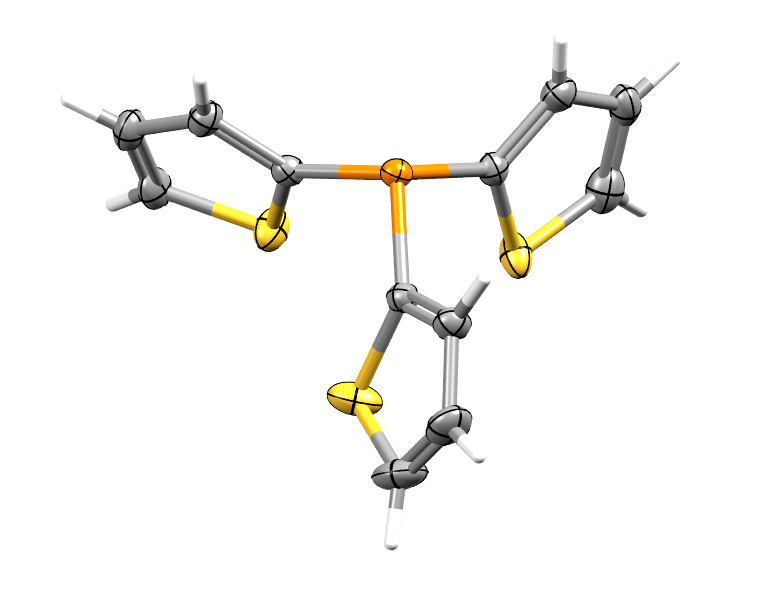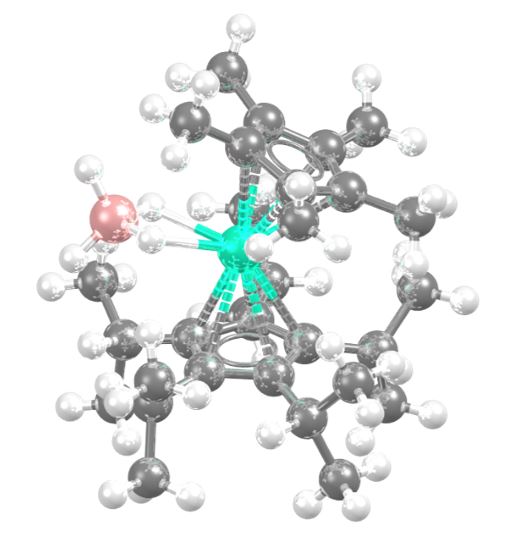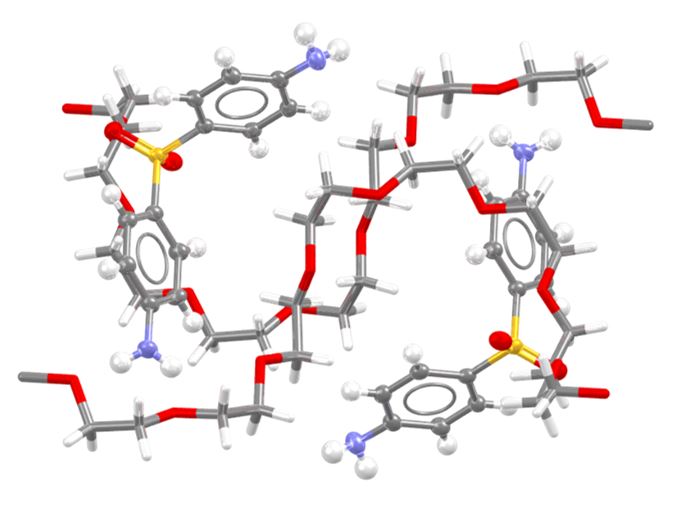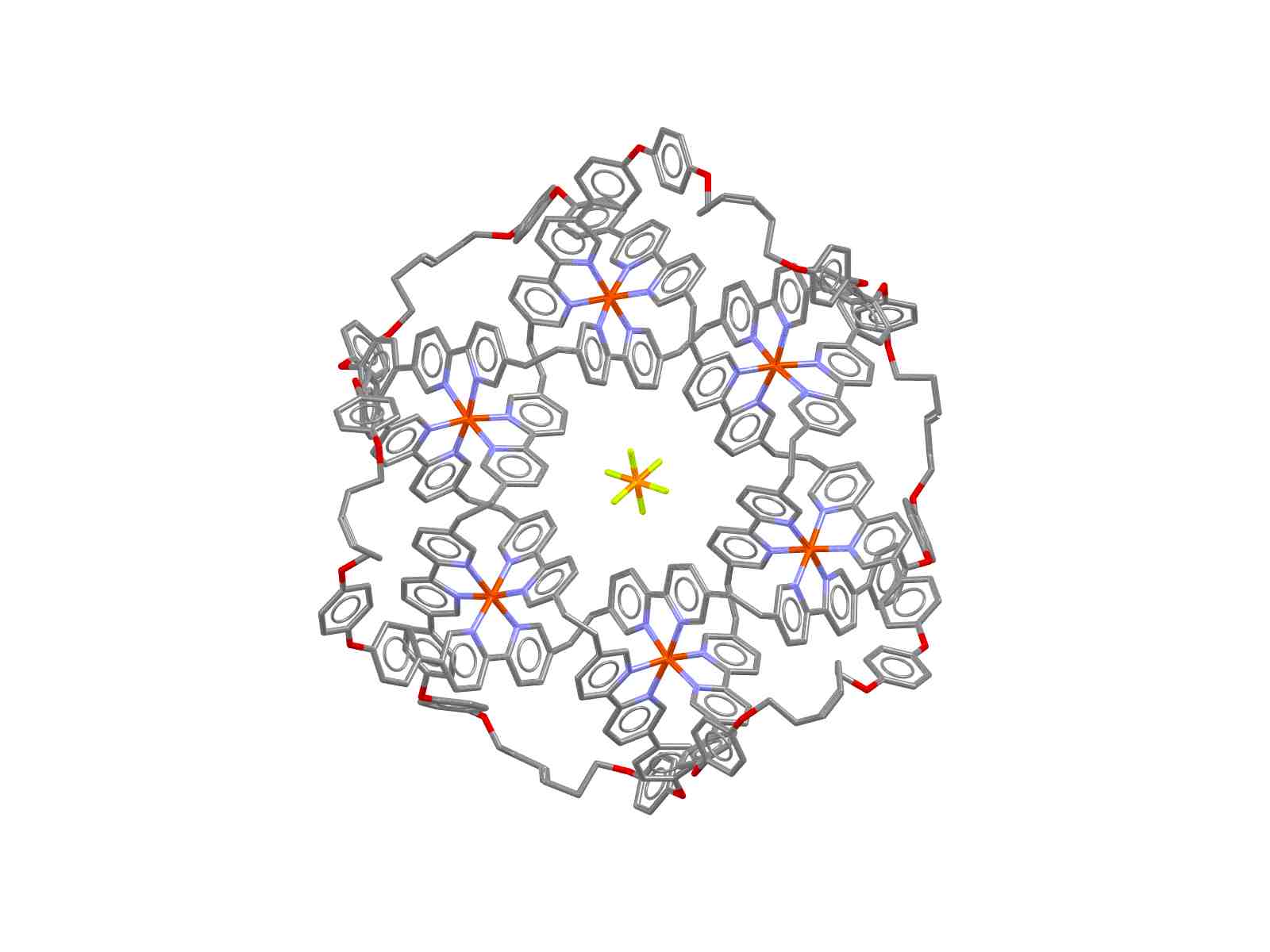2019 CSD Data Updates
Here we describe the data updates released in 2019.
The Cambridge Structural Database Data Update 3 –
2019
We are delighted to announce the third 2019 data update of the Cambridge
Structural Database (CSD). With 14,673 new entries, this update brings the total size of
the CSD to 1,023,815 entries and 1,006,180 unique structures. This takes the release
past one million structures for the first time and you can read more about CSD one
million here.
.png)
CSD
Refcode XOPCAJ (DOI 10.5517/ccdc.csd.cc20vdhs) the millionth
structure added to the CSD
This update consists of 49% organic entries and 51% metal-organic entries and
over 1,300 CSD Communications. This brings the
number of CSD
Communications in the CSD to over 30,000
and they now form a significant part of the database. These structures are given a
citable DOI, are linked from third party repositories and indexes such as the Clarivate
Data Citation Index and of course get a thorough review by our expert Scientific
Editorial Team during curation into the CSD.
The update also features some
historic structures manually typed up as part of an initiative this summer to help
increase the amount of previously non-electronic data shared through the database. This
includes two thesis structures determined by our very own Jürgen Harter. You
can find out more about getting hard copy data into the
CSD here.
Structures containing a diverse set of elements feature in this update and for
this release we wanted to highlight plutonium. In August 1942, the first
visible quantity of a plutonium compound was isolated by American chemists Burris
Cunningham and Luis
Werner.1 Since then over 150
plutonium containing structures have been added to the CSD and this update contains 9
more, one of which is shown below. This structure was published in Inorganic
Chemistry in April 2019 by Louise S. Natrajan, Christelle Tamain and
co-workers. Plutonium is widely used in the production of nuclear energy so
increasing fundamental understanding of plutonium chemistry is imperative to progressing
this field.
.png)
Pu containing compound published
Inorganic Chemistry in 2019 (CSD
Entry: JOHZEO, https://dx.doi.org/10.5517/ccdc.csd.cc21mhx3)
We have once again also updated our
subset of Metal-Organic Framework (MOF) structures. The subset now contains an
extra 1,620 entries, taking the current total to 96,335. One of the structures added was
the recently published framework EHU-30 by Garikoitz Beobide, Oscar Castillo and
co-workers in Chemical
Communications; the first
polymorph of the UiO-66 structure, shown below.
.png)
Visualisation of EHU-30, a new polymorph
of the well-known UiO-66 framework (CSD
refcode POGMEG, https://dx.doi.org/10.5517/ccdc.csd.cc21l1c2)
Instructions for installing the updates can be found below. Let us know if you
have any feedback or questions about the latest software and data update. As
always, we are available via e-mail at support@ccdc.cam.ac.uk or
through our CCDC social media channels (Facebook, LinkedIn and Twitter).
Alongside this data update, we are pleased to announce the latest software
update of 2019. We’ve been working closely with users of
CSD-Discovery software and are pleased to be able to now offer seamless, flexible
searching between CSD and PDB data. For both CSD-Discovery and CSD-Materials users we
have also enabled automation of molecule interaction map generation as seen in SuperStar
and Full Interaction Maps. Read more about the latest software update
here.
1 https://doi.org/10.2172%2F7110621
The Cambridge Structural Database Data Update 2 – 2019
Announcing the 2019 data update 2 of the Cambridge Structural Database
(CSD)! The CSD is the world’s repository of experimentally determined organic
and metal-organic crystal structures. The database is continually updated with new
structures and with improvements to existing entries, to keep you fully informed of the
latest research. This data update brings you 14,702 new entries and 14,140 new
unique structure determinations.
This update means you may now get over one million entries returned to you in
your ConQuest searches. However, it doesn’t mean it is quite time to celebrate
one million structures (unique crystallographic data collections, not including
republications). You can see how close the CSD is getting to this
significant milestone on the counter on our homepage and check out
our CSD Statistics
page showing the CSD in
numbers. Here you can find lots of interesting stats; including Top Journals,
Top Authors and see that the number of unique structure determinations in the CSD has
just passed 992,000). We’re fast approaching the one millionth
structure, so get ready to celebrate, it might be your structure that’s the
millionth! Find out more here.
 CSD refcode
CSD refcode
QOCCUJ (https://dx.doi.org/10.5517/ccdc.csd.cc21tqvg)
CSD refcode QOCCUJ
(https://dx.doi.org/10.5517/ccdc.csd.cc21tqvg) is
an entry in the 2019 data update 2. This structure was published by our Top
Author of the Year (so far), A.L.Rheingold, as
a CSD Communication.
You can find out more about the CSD
Communications archive here.
Instructions for installing the updates can be found below. Let us know if you
have any feedback or questions about the latest software and data update.
Don’t forget our next release will include the one millionth
structure! As always, we are available via e-mail
at support@ccdc.cam.ac.uk or
through our CCDC social media channels (Facebook, LinkedIn and Twitter).
The Cambridge Structural Database Data Update 1 – 2019
We are delighted to announce the release of the 2019 data update 1 of the
Cambridge Structural Database (CSD). The total size of the CSD now contains
over 977,000 unique structure determinations and over 994,000 entries with 20,808 new
entries added in this data update.
The breadth of the CSD, as it gets closer to the 1 millionth structure, can be
seen by these two structures from the 2019 update 1. Guo et al. have reported
a dysprosium metallocene structure (CSD refcode LIRWUH, https://dx.doi.org/10.5517/ccdc.csd.cc207qjj),
one of 4,150 dysprosium structures in the CSD. This single molecule magnet shows a
magnetic hysteresis above liquid nitrogen temperature, a previous limitation for the
application of these materials.

Dysprosium metallocene single molecule
magnet (CSD refcode LIRWUH, https://dx.doi.org/10.5517/ccdc.csd.cc207qjj)
This pharmaceutical co-crystal (CSD refcode YIPMIW, https://dx.doi.org/10.5517/ccdc.csd.cc20pzg5)
is of the antibiotic drug dapsone with polyethylene glycol. Chappa et al. have
investigated if these unusual organic polymer conformers could aid fine-tuning
physicochemical properties.
 Drug co-crystal with an
Drug co-crystal with an
organic polymer (CSD refcode YIPMIW, https://dx.doi.org/10.5517/ccdc.csd.cc20pzg5)
Once again alongside this data update we are releasing an update of the
associated software and updating our subsets. Find out more in our latest blog
– Greater structural insight and clearer visualisation for
metal-organic structures
The Cambridge Structural Database Data Update – November 2018
Announcing the first 2019 Cambridge Structural Database
(CSD) data update! This data update means the CSD now contains 957,868
unique structures and 973,630 entries (CSD version 5.40) – an increase of more
than 57,000 entries from last year. We are currently on course to reach a million
structures by summer 2019 and you can now monitor progress and see the latest
number of structures on our homepage! Used by
scientists worldwide, the CSD provides the complete crystal structure database for
chemists working with organic and metal-organic compounds.
The 2019 CSD release also contains more targeted enhancements to existing
entries. Over 80,000 entries have been been updated to give additional information and
ensure more consistent search results. Enhancements this year include:
- Comprehensive review and enhancement of another 14,000 historical
entries - Addition of a further 15,000 metal oxidation states, meaning the CSD now
contains oxidation state information for almost 300,000 entries - Article DOI links added to over 8,000 more entries

CSD refcode OFATAT (https://dx.doi.org/10.5517/ccdc.csd.cc1pjn2y) is a new
entry in this latest release.
CSD refcode OFATAT is one of many fascinating new entries in this release. This
structure is the amazing “most complex molecular knot to
date” which has one continuous 324-membered molecular ring with nine
alternating crossings!
This data update also comes with our 2019 software update, you can
find out more about this in our latest blog post – “2019 CSD Release: A New Beginning”
Let us know if you have any feedback or questions about the latest software and
data update. As always, we are available via e-mail at support@ccdc.cam.ac.uk or through our CCDC social
media channels (Facebook, LinkedIn and Twitter).
Installing the updates
The CSD software suites have a built-in auto-update mechanism that makes
updating the data and software easy and will also notify you if an update is available.
More information is available via our Support section
If you would prefer to download and install an update manually or you are
unable to run the auto-update mechanism through your computer, then all of our updates
are also made available via the ‘Data & Software Updates’ section of
our Downloads page
and you can install them manually. If you are having problems installing the
updates please see our FAQ for more
details and other options.